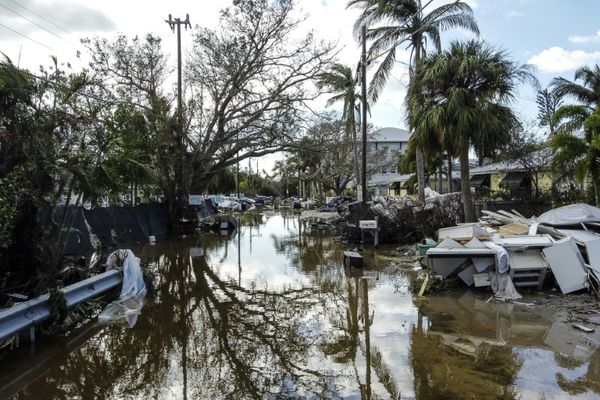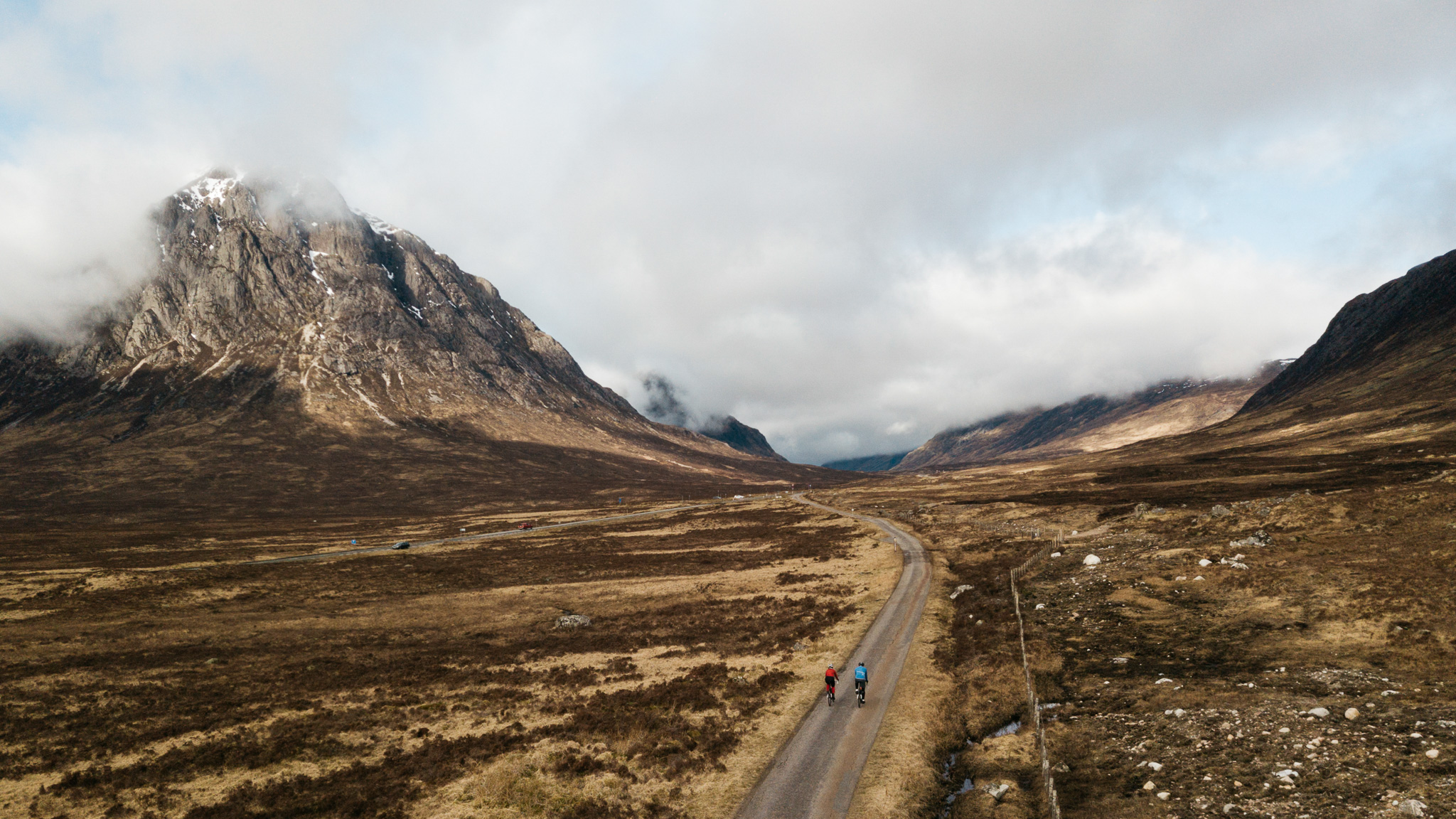
Scotland has it all – awe-inspiring landscapes, featuring lochs and stunning mountains and some of the last remaining remote locations in the UK. It makes Scotland one of the most inspiring places to ride a bike, not just in the UK but on the planet. Scotland also has some of the best access and right-to-roam legislation which allows responsible access across the country.
We've explored some of the best mountain bike routes and brought you some of the toughest MTB and best gravel bike adventures you can find. Some are remote and take in-depth planning, with navigation and bike skills, to others that can be ridden at a more leisurely pace, closer to civilization. You'll definitely need your best waterproof jacket even in the height of summer, as Scottish weather can be sun, rain and snow all within an hour. But even if the weather is against you, riding these routes will be an unforgettable experience and lifelong memories made.
An Turas Mor
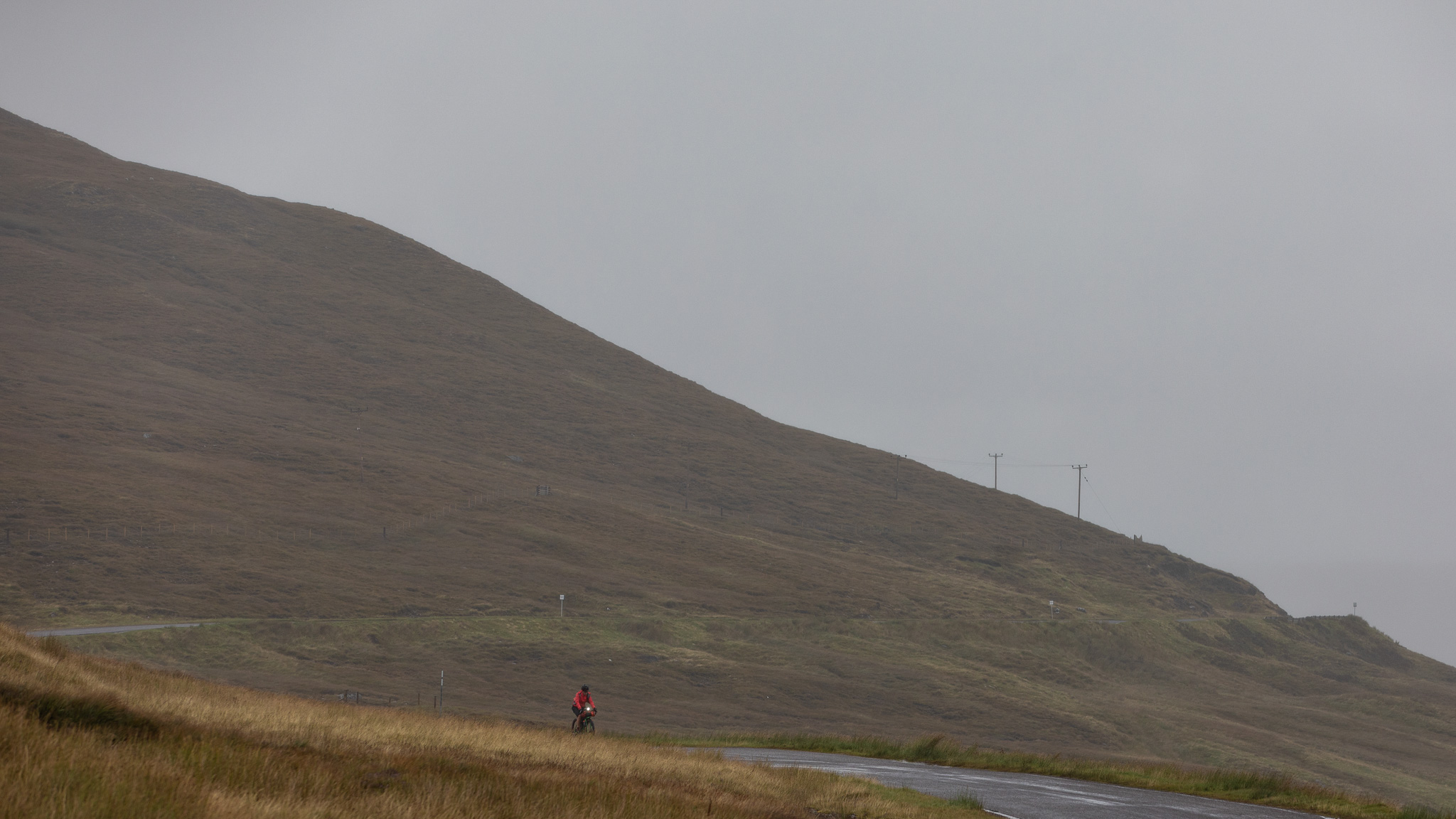
An Turas Mor is Scottish Gaelic, meaning 'The Long Journey'. With the route taking in a massive 570 km ride from Glasgow to Cape Wrath (or reversed) it's one of Scotland's premier long-distance mountain bike and gravel bike routes.
Starting (or finishing) in the heart of Glasgow at the Kelvingrove Art Gallery in the beautiful west end, and finishing (or starting) at the dramatic and remote Cape Wrath lighthouse. The trail works its way north (or south) following historic paths, cycleways, forest and hill tracks through the isolated highlands of Scotland and it's as far north and west as you can go on the mainland of Scotland.
The An Turas Mor route only became possible in 2017 with the construction of a new hydro path across Rannoch Moor and trail improvements connecting Glen Moriston to Glen Affric. Totaling 570 km, the journey north connects the new sections and existing trails, cycleways, drove trails, historic military roads, and forest tracks to give a continuously rideable non-technical cycling adventure suitable for mountain bikes and gravel bikes.
The trail, however, does require off-road bike skills and is a painstaking test of endurance, with just under 8,000m of elevation gain, there are plenty and often fast descents to test even the most experienced of riders.
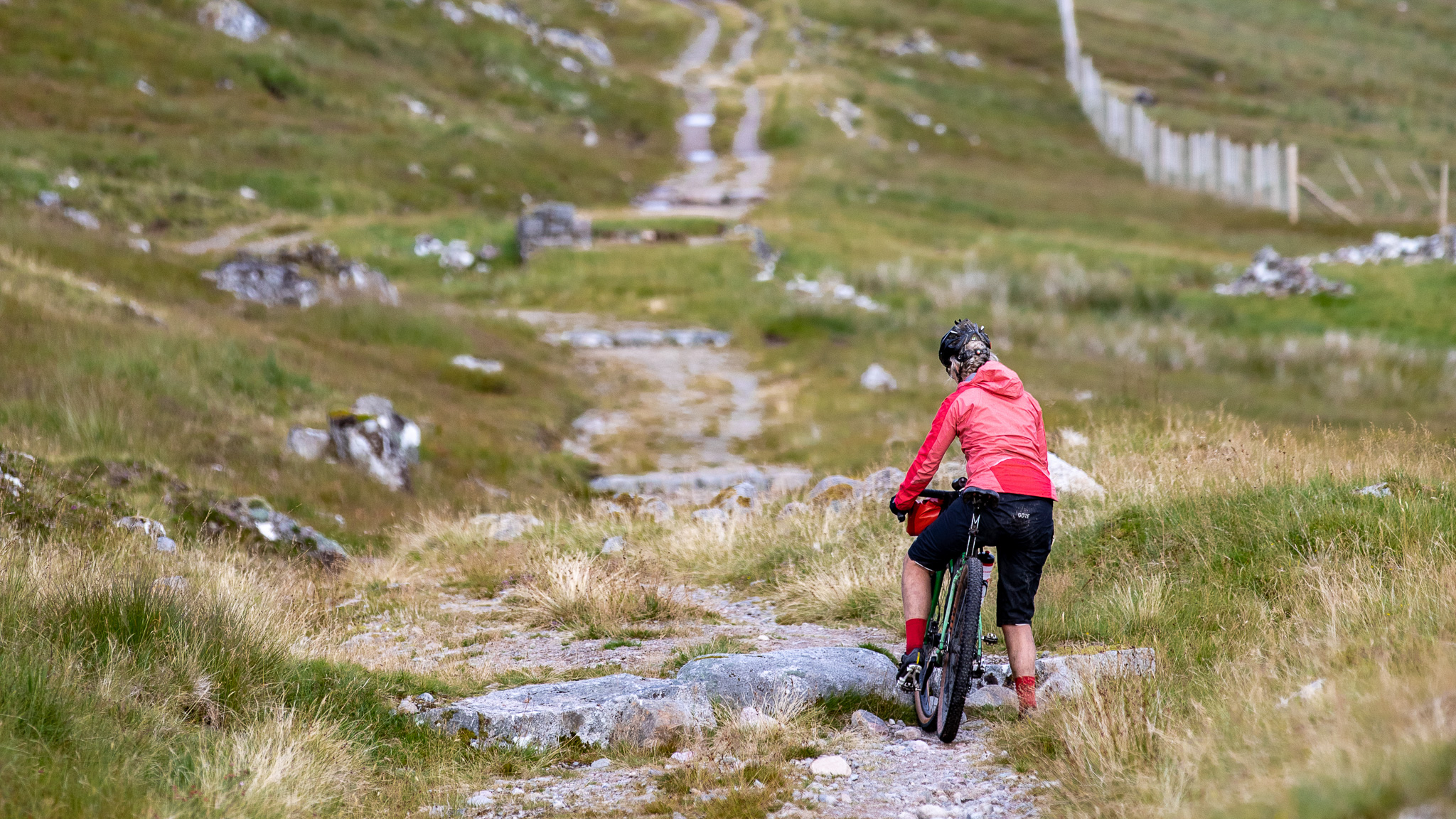
West Highland Way
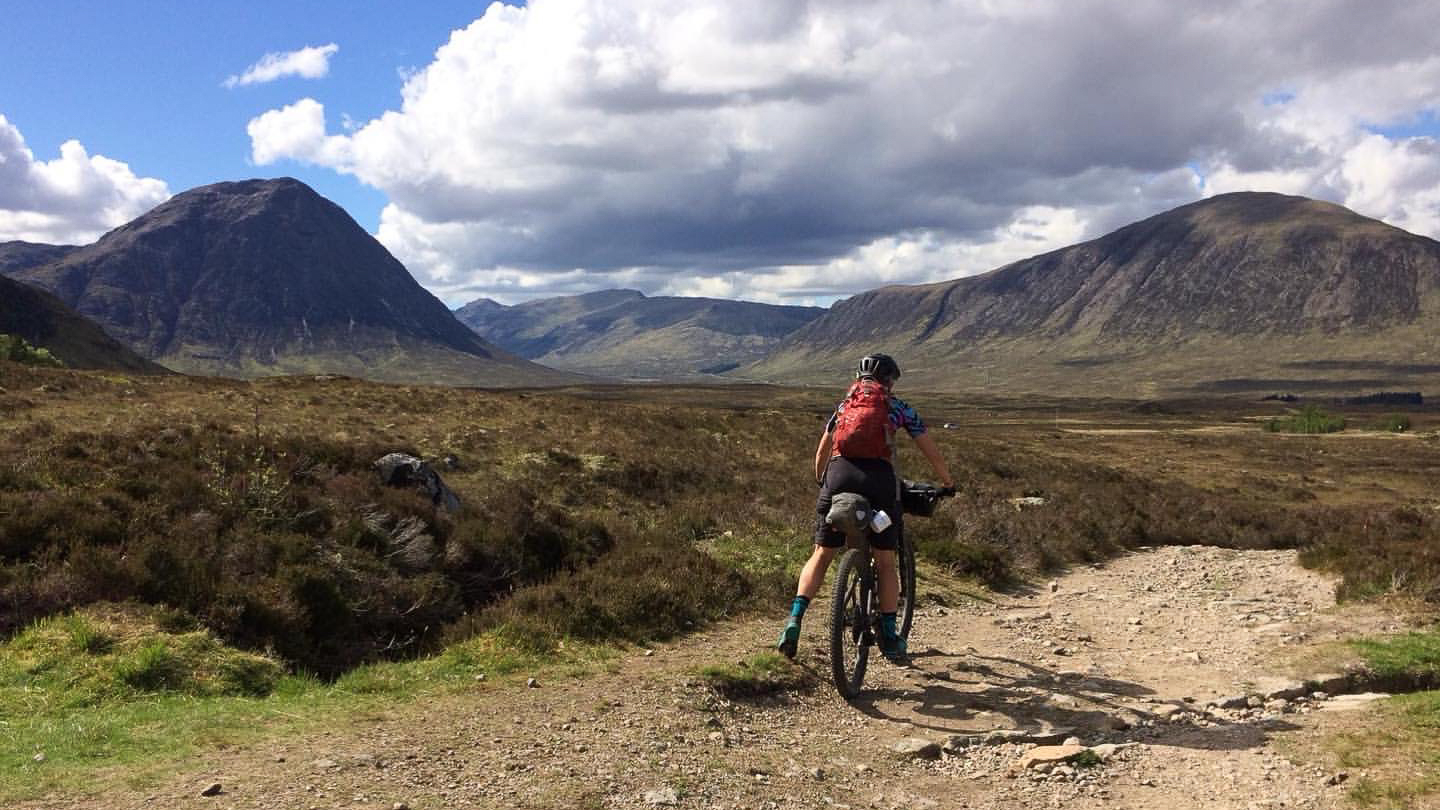
The iconic West Highland Way runs from Glasgow to the highland town of Fort William. While this multi-day traverse is well known by hikers from around the world, attracting many thousands every year, there is a lesser-known tradition of mountain bikers and bike packers that have been vying for record times for years. Riding it in its entirety is a hearty accomplishment on its own. It boasts a hefty 3,154m of climbing over a relatively short distance, and parts of the trail involve hiking your bike, rather than riding it.
The FKT (fastest known time) is currently held by Ineos Grenadier pro rider Connor Swift, completing the route in just 8 hours, 32 minutes and 28 seconds, which beat the previous FKT of 9 hours 14 minutes and 32 seconds set by the late Scottish mountain bike legend, Rab Wardell.
The traditional walking route starts from Milngavie just north of Glasgow and is and weaves past some of the greatest hits of Scotland's scenery, including Loch Lomond, Rannoch Moor, Glencoe, and Glen Nevis, and finishes in the shadow of Ben Nevis, the UK's highest mountain.
With big numbers in the climbing count, it starts big and will have riders questioning their life choices as they tackle Conic Hill early on the first day of riding. This is a stand-alone challenge all of its own, with a ferocious climb and a steep downhill section to follow.
There is a tricky, technical trail along the shores of Loch Lomond and requires a high level of mountain bike skill with a good few sections of carrying and pushing.
The route continues north and becomes slightly easier with wide double track and occasional singletrack before reaching the wild and exposed Rannoch Moor, which can be tough if the weather is bad.
After Rannoch Moor, the stunning Glencoe is your reward and you may choose to camp here as most people do or stay in the Kings House Hotel with its famous panoramic views of Buachaille Etive Mor, and its equally famous always-hungry deer.
The next day starts with Devil’s Staircase, whose name is justified, particularly on a bike. However, like all the summits you'll reach the reward of the climb is breathtaking views in all directions. The final part of the route is a long descent into Kinlochleven, before undulating, but solid paths through Glen Nevis, to reach Fort William and the end of the route with the obligatory photo with the 'Man with the sore feet' statue that marks the official end of the 'Way.
Highland Trail 550

Starting in Tyndrum Village Hall, your first port of call before you start should be the famous West Highland Way, Green Welly shop. It's an ideal place to stock up on provisions for the monstrous self-supported mountain bike route that is The Highland Trail 550.
Originally put together by veteran endurance mountain biker Alan Goldsmith as a training ride in preparation for the Colorado Trail Race, it soon became apparent that the great trails, beautiful scenery, remote wilderness, and fickle Scottish weather, offered a world-class route for a self-supported mountain bike challenge right here in the UK.
The majority of the route is on excellent trails and quiet roads, but be prepared for some boggy, very technical sections and expect some extended periods of hike-a-bike, even the best climbers and technical descenders will find plenty of terrain to challenge their ability. You will be expected to be competent at navigating as not all of the route is obvious even with GPS.
The official 2023 event group start is on 27th May and due to extremely high demand for places from riders across the world entries for men and women are now actually closed. However, it's worth keeping an eye out for places coming up before the start date. Due to the hardcore nature of the route you are required to provide a brief description of your multi-day, off-road bikepacking experience with evidence (event results, links to rides on Strava, blogs, etc).
If you don't secure a place, the route is free to test and ride at any time of year with some would say, crazy people like Steve Bate MBE even attempting a full deep winter ride. Steve had to abandon it with frostbite on his toes, so beware! The ideal period is around late spring, but it's Scotland, so again expect four seasons in one day and of course the infamous Scottish midge.
Find out more details, the rules, and maybe secure a place if you dare at Highland Trail 550.

The Capital Trail
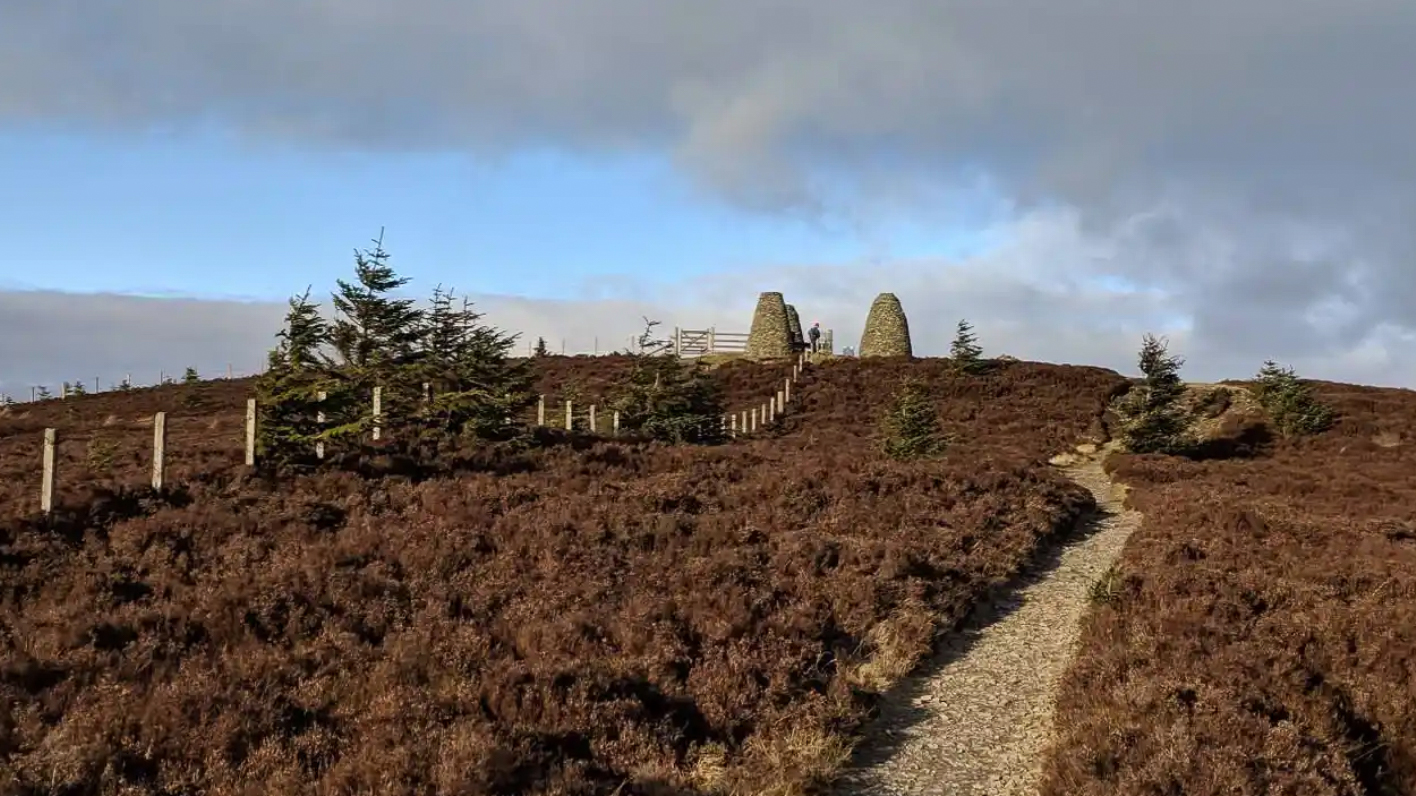
We are closer to civilization with this beauty and favorite of the Bike Perfect team as it starts and finishes in Edinburgh, which is the home town of two of the BP crew and our very own reviews writer, Graham Cottingham, has the FKT on the route.
Created by renowned Bike Packing author Markus Stitz, it was voted by Bikepacking.com as the Best New Trail a few years ago. The Capital Trail is a 240 km route with plenty of elevation thrown in. Touted as a perfect challenge for advanced and expert mountain bikers looking to explore the amazing trails around Edinburgh, East Lothian and the Scottish Borders.
With around 5,700m of climbing the Capital Trail is a true test, but offers an amazing variety of singletrack, Land Rover tracks, forest roads and quiet country lanes. In short, it is one of the very best routes that is not in the Scottish highlands, with most of the trails rideable in dry conditions.
The route starts and finishes at Portobello Beach in Edinburgh and starts riding along the beautiful Firth of Forth coastline, before swinging inland to the quiet and scenic country lanes of East Lothian. It heads south on the Southern Upland Way with landmarks like Thirlestane Castle, Melrose Abbey and the Three Brethren (a trio of massive cairns dating back to the sixteenth century) to pass along the way.
Selkirk is the most southerly point of the route before you hit some of The 7Stanes trails at Innerleithen and Peebles (The 7Stanes are world-class mountain bike venues, scattered around the south of Scotland). There is some big elevation in-between, as you then head north towards and over the Pentland Hills offering some stunning views of Edinburgh as you head back toward Portobello Beach and the start point.
Although the route doesn’t venture too far from the city of Edinburgh, the Capital Trail takes you through some very remote, beautiful places. The route is designed to be ridden clockwise in two to four days with overnight stops with plenty of opportunities to sleep under the stars, in a tent or bunkhouses, B&Bs and hotels. And the odd pub of course. If you fancy taking on Graham's FKT, your time to beat is an impressive 14 hours, 10 minutes and 58 seconds.
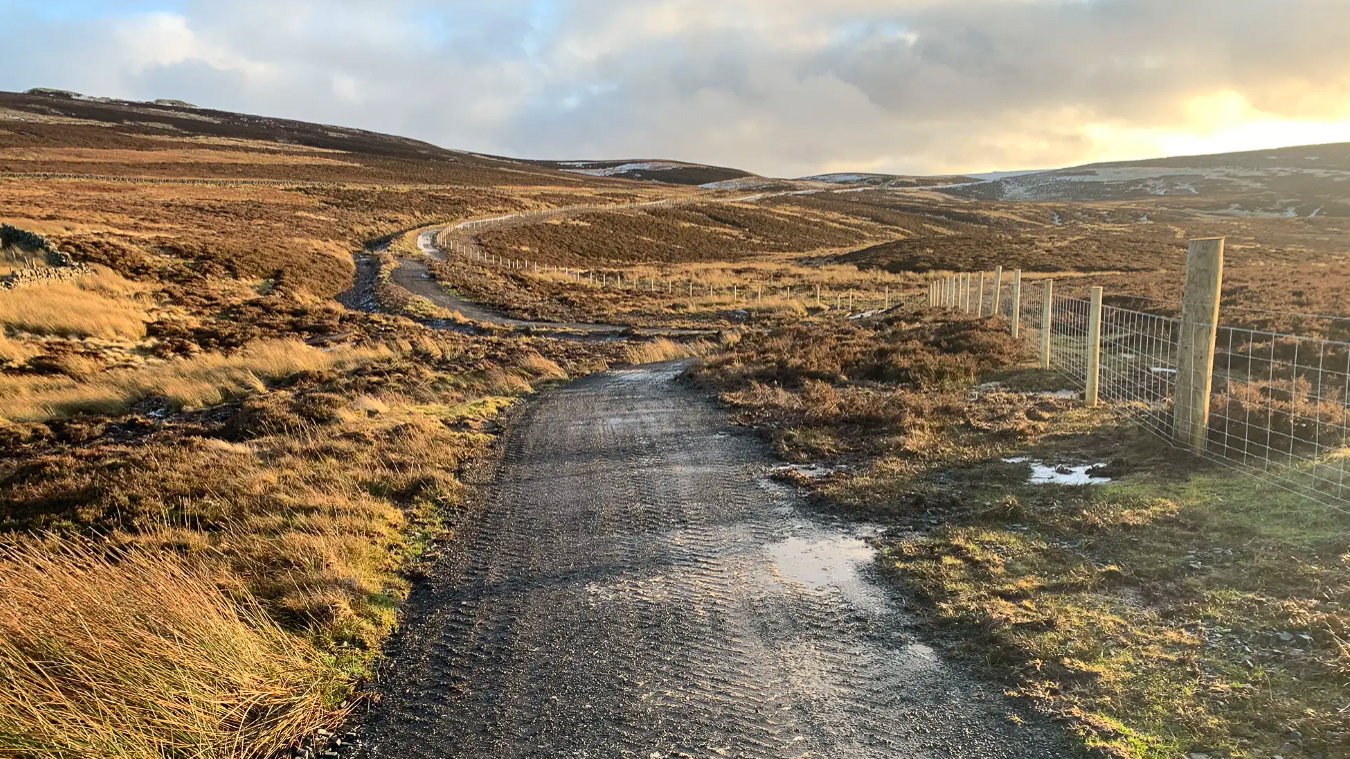
John Muir Way
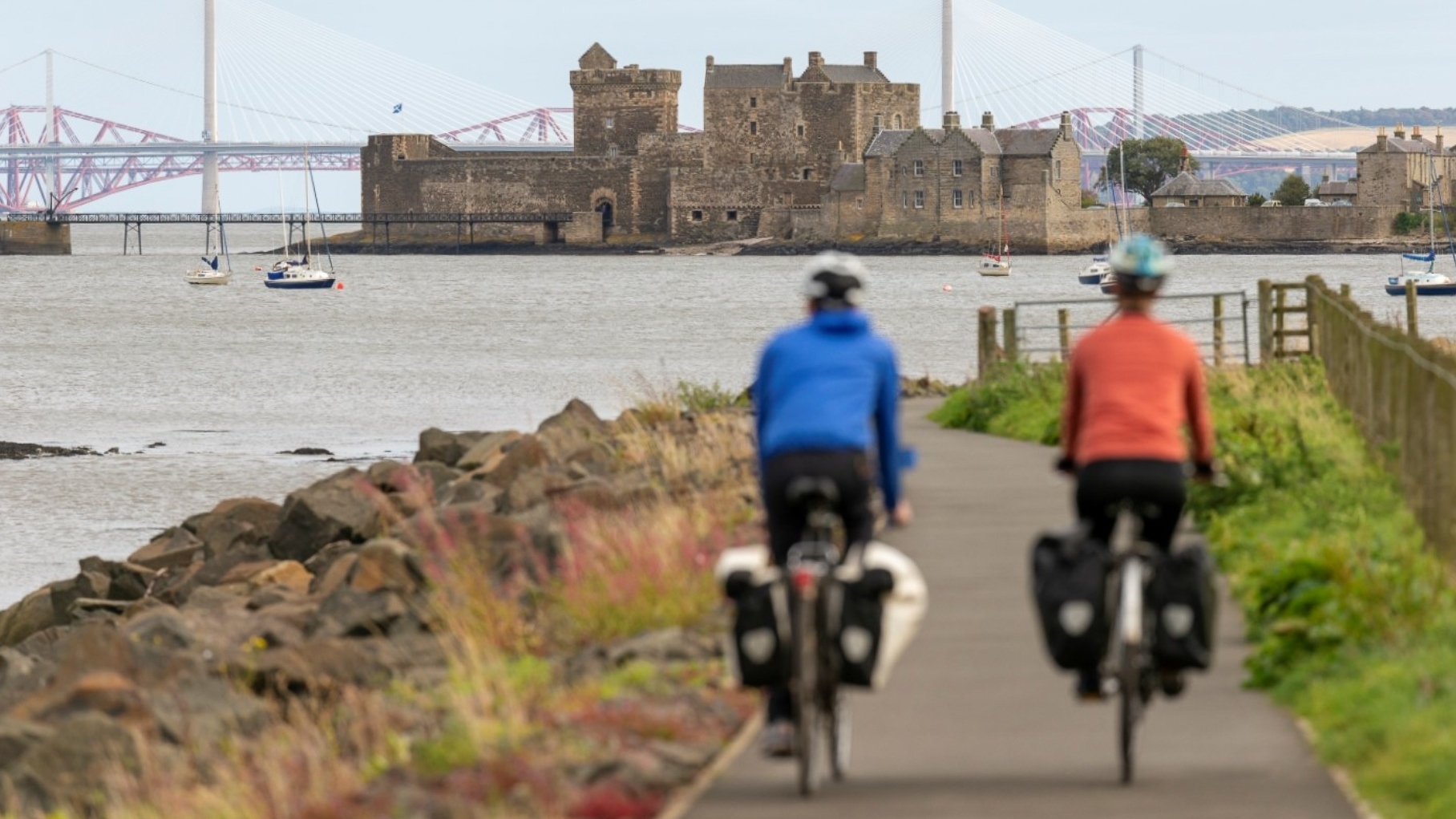
The John Muir Way is a 212 km coast-to-coast ride through the central belt of Scotland which compared to some of the other routes here, is a more sedate adventure with just 1,600m of climbing. It's an excellent route to tackle mid-summer, in one go, as you attempt to reach Dunbar before the sunsets. Or split up into shorter sections and a more leisurely pace, the John Muir Way offers a journey through Scotland’s landscapes, history and heritage, and it links Helensburgh in the west with John Muir’s birthplace in Dunbar on the east coast.
John Muir's passion for wild places led him on a life-long quest to protect them, and Muir’s writings helped people to understand the importance of wilderness and inspired the creation of the world’s first national park system. The JMW route symbolically passes through Scotland's very own first National Park, Loch Lomond and The Trossachs and offers a chance to connect with nature and take advantage of the green spaces that link the two coasts.
This is a ride has everything, taking in woodlands, beaches and canals, and although you are never really far from the busy populated central belt, there are sections that will make you feel like you have been transported to the remoteness of the Scottish highlands. You'll also discover some of Scotland's ancient Roman history, engineering heritage and several UNESCO World Heritage sites on the JMW.
The start/finish of the route is marked by a circular stone plinth with engraved footprints and a white stone bench with John Muir quotes. Leaving Helensburgh behind the route makes its way through Balloch Castle Country Park with fantastic views from the shores of Loch Lomond before heading up and over the Kilpatrick Hills giving a real sense of wilderness.
From here most of the kilometers are flat and easier going than the previous sections and the trail meets the Forth and Clyde Canal, which in John Muir’s time provided a busy shipping link between the Firth of Forth and the Firth of Clyde. Passing through the central belt town of Falkirk with the Falkirk Wheel and the Kelpies (two of Scotland’s most well-known tourist attractions).
Passing Linlithgow, Boness and South Queensferry the route takes you through some wonderfully rural countryside and gives superb views of all three of Scotland's famous Forth bridges before you hit Edinburgh, Scotlands' capital.
You leave Edinburgh via Musselburgh and hit the East Lothian coastal trail passing glorious beaches to North Berwick. Following the river Tyne, you pass the John Muir Country Park, before reaching Dunbar and John Muir's Birthplace Museum which marks the finish of the route.
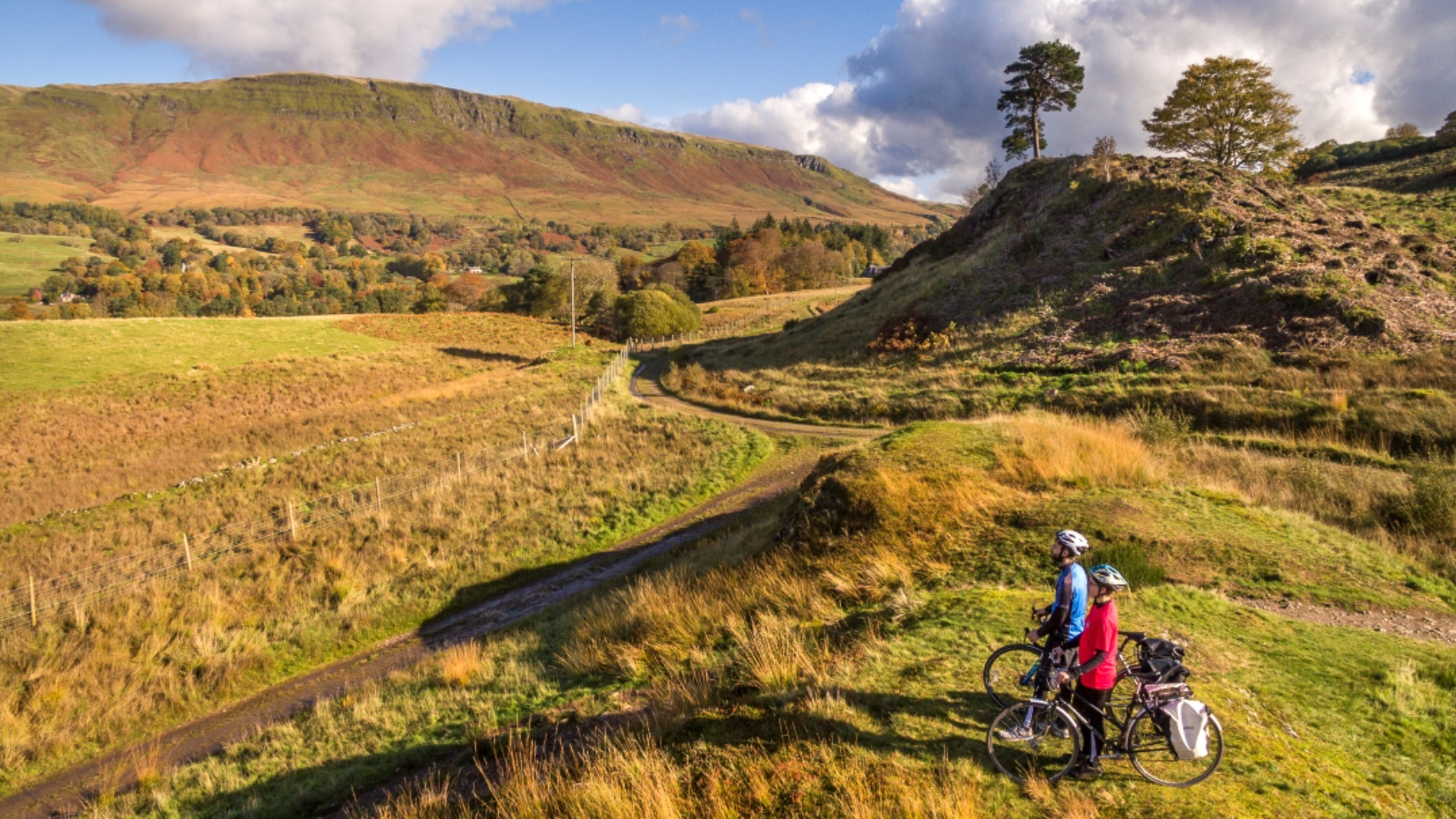
Although Scotland has cycle-friendly access and right to roam laws, with all the the routes, please be respectful to the landowner’s properties, shut all gates, don’t leave any rubbish and leave all livestock and wildlife undisturbed.
Be aware, the weather can change on a whim, and you are likely to find yourself experiencing all that Scottish weather has to offer. Never attempt any of the routes unless you have thoroughly prepared for them, are fully aware of your limitations, and are ready for whatever Scotland may have in store for you.

